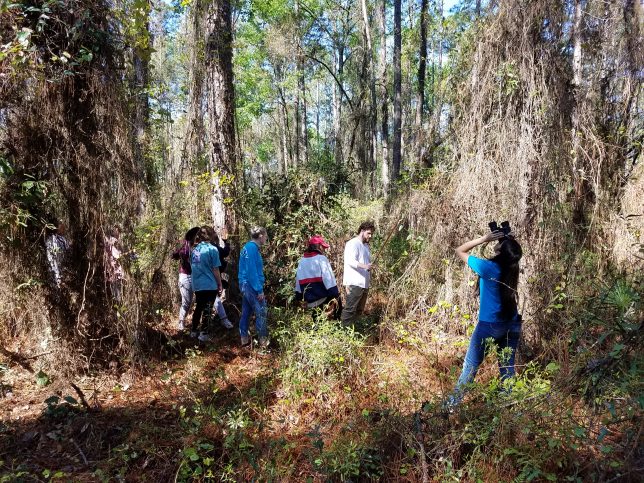2021
- Dr. Anderson is back in school to do a professional certificate in data science and analytics through Georgia Tech. He started in early March and can be found talking to his computer in the evenings in various languages from R and Python to SQL and JavaScript.
- Blake has wrapped up his field work with the camera traps and is getting ready defend late summer/early fall 2021. What sorts of differences in activity and species composition did he find between armadillo and gopher tortoise burrows? Stay tuned.
2020
- Congratulations to Josh Brown, who successfully defended his MS thesis and will be graduating this winter. Josh is currently working as lecturer at VSU, while he ponders his options for the future.
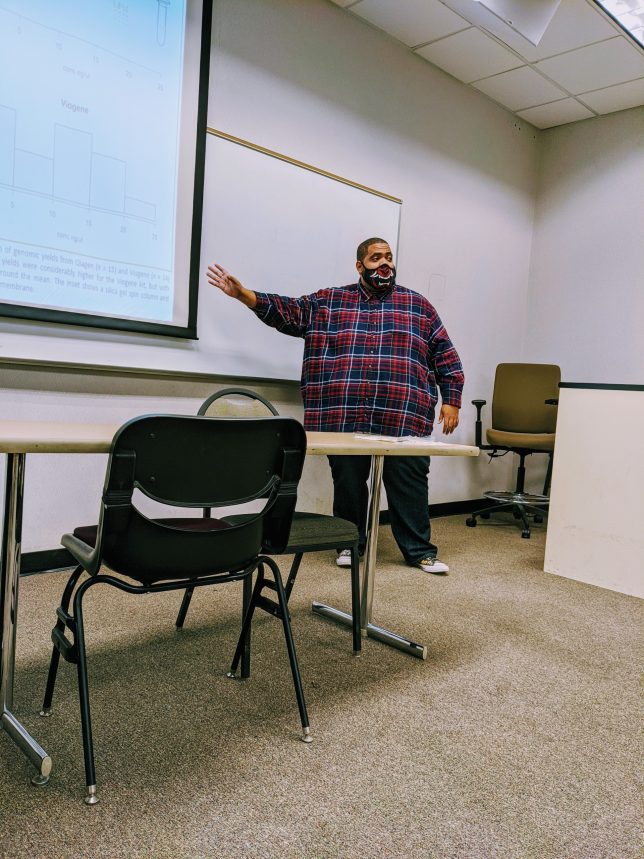
- Our paper on cocoplum dispersal by the gopher tortoise was officially issued today (07/16/2020). https://doi.org/10.1093/aobpla/plaa024
- Another cool pic from Blake Lamb’s camera trapping project: black racer at entrance to armadillo burrow.

- 06 May 2020: Wrapped up the final for Spatial Analysis today. Lots of new content on interpolation and spatial objects in R this semester.
- 12 Mar 2020: Our paper on the effects of elevation and microtopography on gopher tortoise burrowing intensity was officially published in Copeia. We found that microtopography was super predictive of burrowing intensity, especially in flatwoods forest. Some cool point process modeling in this study; be sure to check it out.
- 21 Feb 2020: Our paper on spatial genetic structure in the nine-banded armadillo was officially published in Journal of Mammalogy (online early version was published on 04 Dec 2019).
- 13 Jan 2020: Spatial Analysis (BIOL 3050/5050) is being offered again this semester!
2019
- 23 Oct 2019: Master’s student Blake Lamb is racking up some cool pictures of animals at armadillo and gopher tortoise burrows. Here is an armadillo visiting a gopher tortoise burrow:

- 22 Oct 2019: Our paper on spatial genetic structure (Binns et al.) was accepted for publication in Journal of Mammalogy. We found evidence of male philopatry and female-biased dispersal, which is rather rare in mammals. Big publication surge happening in the Anderson Lab in the next year; watch out!
- 17 Oct 2019: During his trip to VCU, Dr. Anderson began development of a new R library focused on spatial correlograms. This library will expand on the functionality currently offered in ‘spdep’, where Moran’s I and Geary’s c correlograms are limited to distance classes with equal intervals. The new library will offer more flexibility in defining distance classes (bins), including custom distance classes and distance classes based on an equal number of pairs in each class. The library will also include tools for visualizing pair counts for different types of distance classes, as was possible with PASSaGE 2. The long-term goal is to expand the functionality to include other types of correlograms (e.g. bearing correlograms) for which existing functionality in R is lacking. Beta code will be available shortly on GitHub and will also be described in the blog.
- 25 Sept 2019: Dr. Anderson left for a sabbatical trip to the Center for Biological Complexity (soon to be renamed the Center for Biological Data Science) at Virginia Commonwealth University.
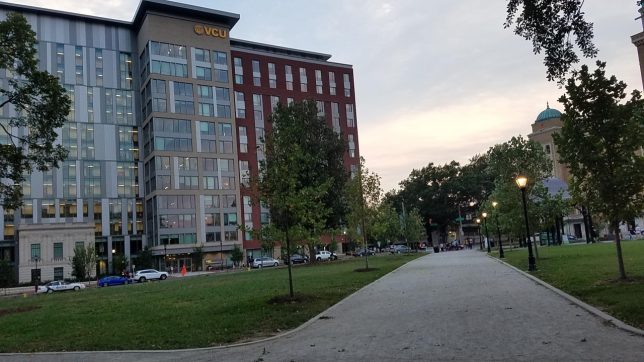
- Three papers in the Anderson lab are currently under review. The armadillo spatial genetics work was recently re-submitted to Journal of Mammalogy. The Avon Park-Elevation work with gopher tortoises has been accepted with minor revisions in Copeia and is in revision. The cocoplum paper has been cascaded to AoB plants and is in review.
- 05 July 2019: Brandi Griffin just officially finished her MS thesis: “The functional morphology of Tillandsia usneoides: a pendent epiphyte”.
Brandi has also landed a short-term gig surveying plant diversity at the Jones Ecological Research Center. - 05 July 2019: Namrata Bhandari (McDonough Lab) just officially finished her MS thesis:
“Impact of microhabitat selection on burrow distribution of nine-banded armadillos and gopher tortoises in a pine plantation - 21 June 2019: Katie Ahl, Eli Carlo, and Jamey Medders finished their directed study at Lake Louise. They sampled Spanish moss occurrence on trees in 31 quadrats in the mixed-pine hardwood forest at Lake Louise. They endured a brutal heat wave, thick briars, and angry yellow insects…but got the job done.

- 26 April 2019: We just finished a resurvey of burrows in the pine stand at Lake Louise. We found a total of 234 burrows after the burn (as compared to only 97 before the burn)! These data will be added to our data set from Moody AFB. The information will help us to determine if burrowing processes are independent for these two primary excavators that now cohabit many areas.
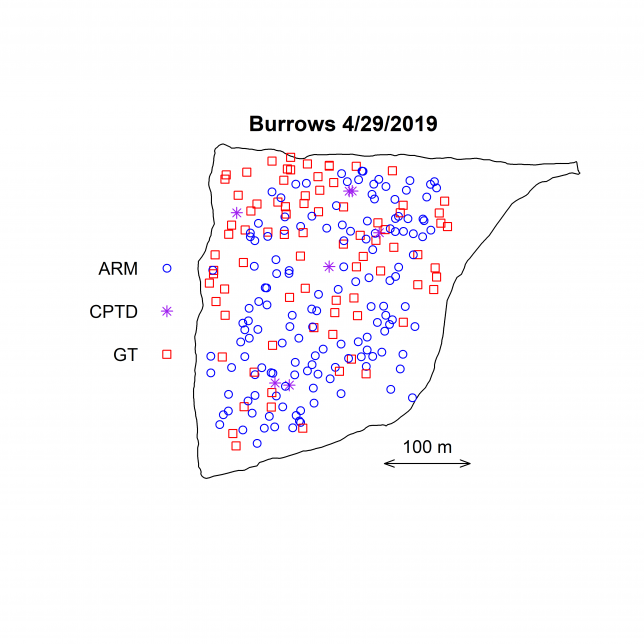


- 18 April 2019: Marcus Diaz won best poster in the sciences at Annual Symposium on Undergraduate Research at VSU. As the top student in Fall 2018, Marcus was chosen to be the student representative for the poster, which was based on data collected by Biology 3250 F’18 (Ecology and Evolution) and Biology 3050/5050 SP’18 (Spatial Analysis). Marcus was also recently accepted to a Ph.D. program in microbiology at the University of Tennessee.
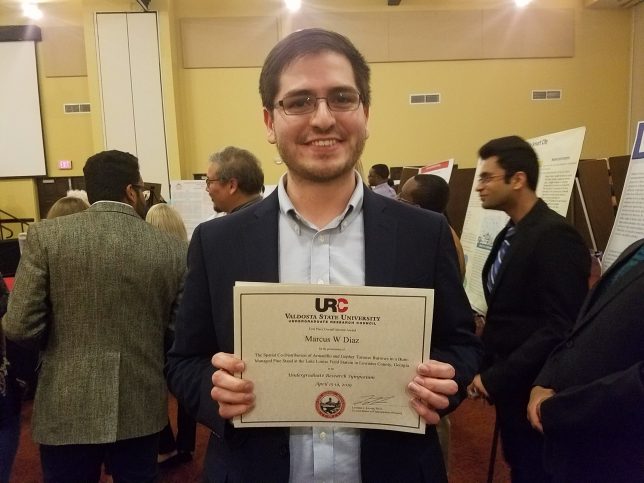
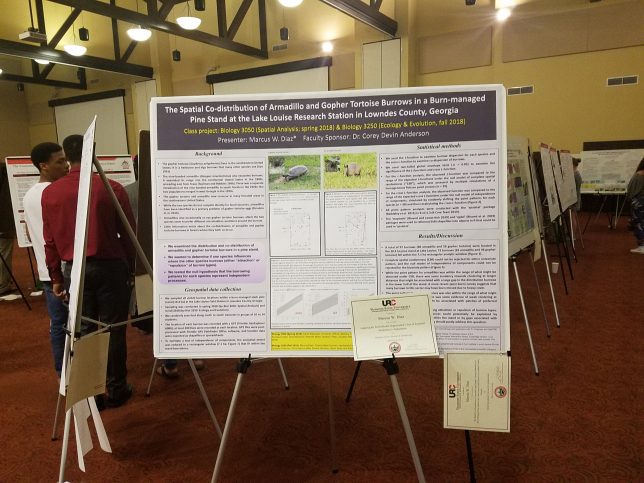
- Biology 3250 (Ecology & Evolution) returned to the mixed pine-hardwood stand at Lake Louise to survey Spanish moss. The plan is to combine the data from this stand with the data set from the pine stand, which should give a nice picture of how the spatial distribution of Spanish moss changes during forest succession.
